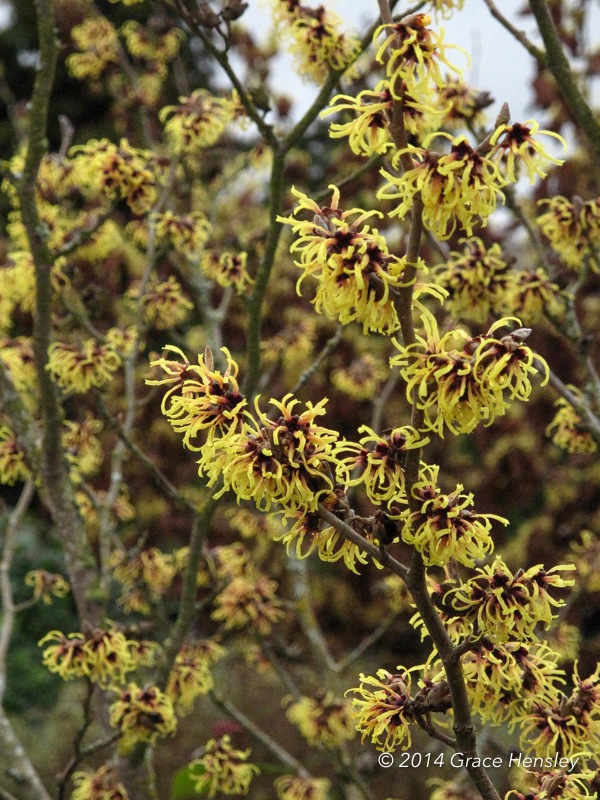
Hamamelis, a genus containing only approximately four species, is wide-spread with two (or three) species from North America, and one each from Japan and China. The Japanese witch-hazel, Hamamelis japonica, was collected in 1822 by von Siebold, and described in the mid-1800s. Early flowering with large flowers, the Japanese species is only lightly fragrant.
The Chinese native Hamamelis mollis was originally collected from the Lushan Mountains in 1877. It wasn’t until the turn of the century that George Nicholson, curator of Kew Gardens, recognized that it was different from the Japanese cousin [see Pacific Horticulture]. The Chinese species is distinctly fragrant with long curved yellow petals and a small calyx.

The intersectionals, crosses between Hamamelis mollis and H. japonica have yielded some exciting cultivars that contain H. japonica’s color range and H. mollis’ fragrance. My favorites include the acid-yellow H. x intermedia ‘Pallida’, the deep-red tones of ‘Diane’ which also has vivid red leaf color in the fall, and the coppery ‘Winter Beauty’.

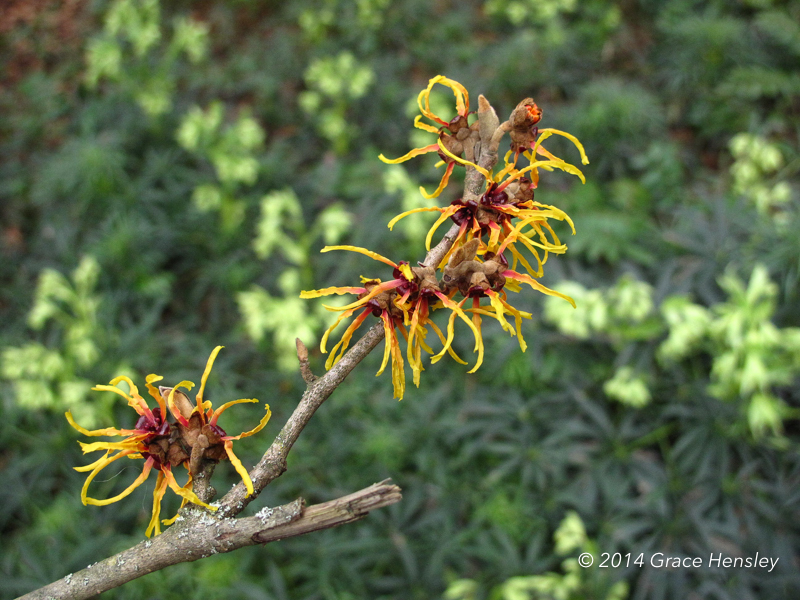
I’m partial to oranges and copper tones, so I have to include H. x intermedia ‘Jelena’ in my list of favorites, however I don’t like the look of the leaf marcescence that some cultivars are prone to. Marcescence, or leaf retention, is not well understood in the genus. It is thought to be due to cultivar, age of the plant (they eventually ‘outgrow’ this), or possibly even the weather or soil conditions. I think it’s sheer stubborn-ness.
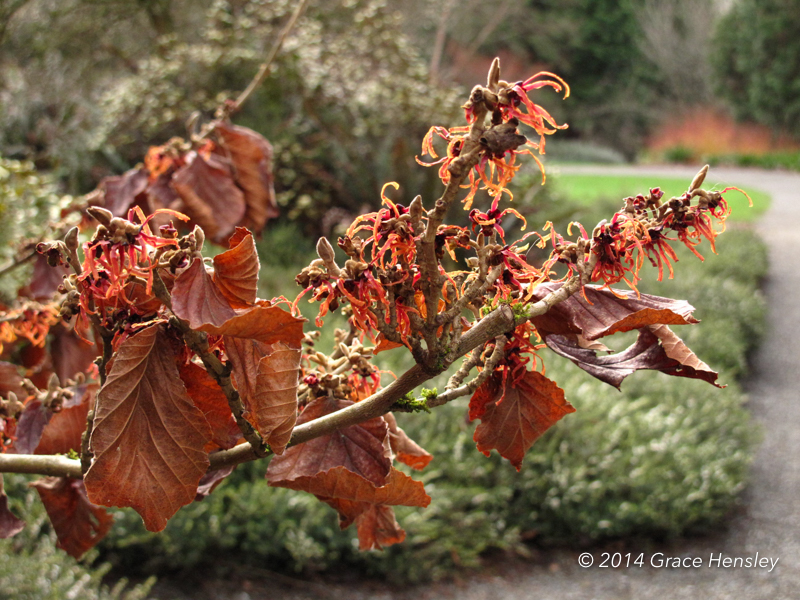
Blooming the latest in the year is H. virginiana, native to the Eastern United States and Canada. It begins its show in mid-October with fragrant, small yellow flowers and vivid yellow foliage. A large, multi-stemmed shrub or small tree, it is probably too big for our small gardens, but it looks fabulous at the Arboretum amongst the Japanese maples. It is from the bark of this species that we get the astringent, witch-hazel, used for abrasion and wound healing. It was also used by early settlers as a dowsing device and may get its name from the Anglo-Saxon word wice or wych (meaning pliable). The true hazels, Corylus, with their similarly fuzzy leaves, were not available to early American colonists.
Hamamelis vernalis is similar to H. virginiana, but blooms in the spring. Like all of the North American species, the flowers tend to be smaller. Cultivar H. vernalis ‘Purpurea‘ is distinctly purple and H. vernalis ‘Christmas Cheer’ has a lovely crimson calyx with golden petals. Dan Hinkley extolls the cultivars ‘Sandra’ and ‘Lombarts’ Weeping’ in his second Explorer’s Garden book.
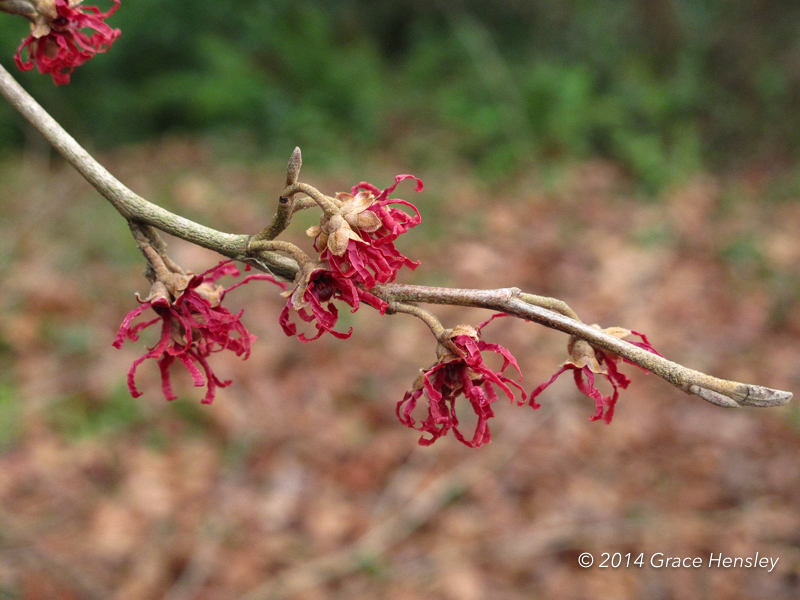
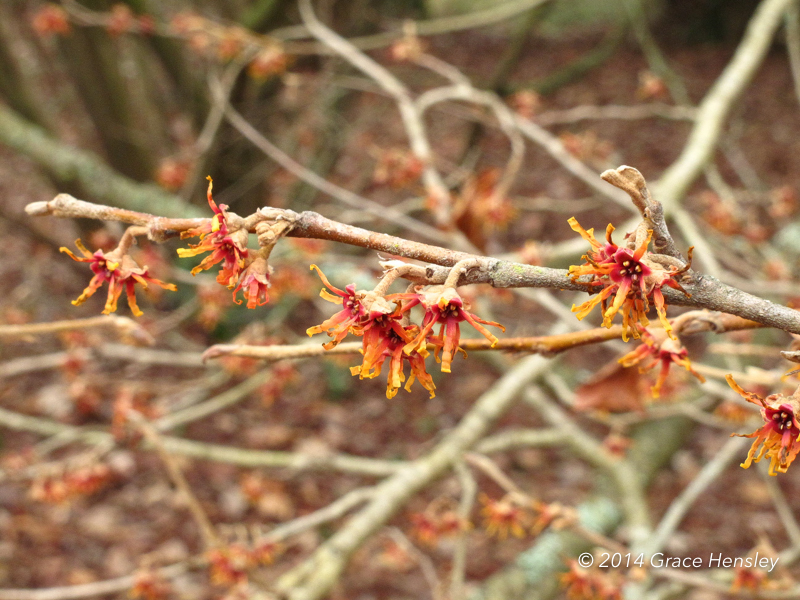
Taxonomists enjoy arguing whether there are two or three species in North America, sometimes lumping or splitting out Hamamelis mexicana whose distribution in northeastern Mexico blends into the southern distribution of H. virginiana. And as recently as 2004, a new species, H. ovalis, has been identified with larger leaves, shallower roots, and vivid red flowers. Or maybe it is the ‘lost’ species of 1812, H. macryphylla? Lumper or splitter, take your pick. We’ll all certainly enjoy new cultivars in our gardens. If you can’t decide, depend on the trial performed by the Chicago Botanic Garden.
If you’re adventurous, like Dan, collect seed the next time you’re in China or Japan, but be sure to store it in a paper-bag because the capsules are prone to ‘explode’ into little mouse-droppings when it dries. Make sure you cold-stratify the seeds and wait patiently for up to a year for them to germinate. Train the young plant into beautiful fans, with careful summer pruning. Make sure to remove any water-sprouts or anything growing below the graft line (Hamamelis is typically grafted on mollis root-stock.) Here they are lovingly pruned at the Center for Urban Horticulture.

Come learn more about the collection from curator Ray Larson, next week on Tuesday, January 21st from 7-8:30pm at the Washington Park Arboretum Graham Visitor’s Center. [Thank you, Sasha and Jessica, for the tip!]
Save


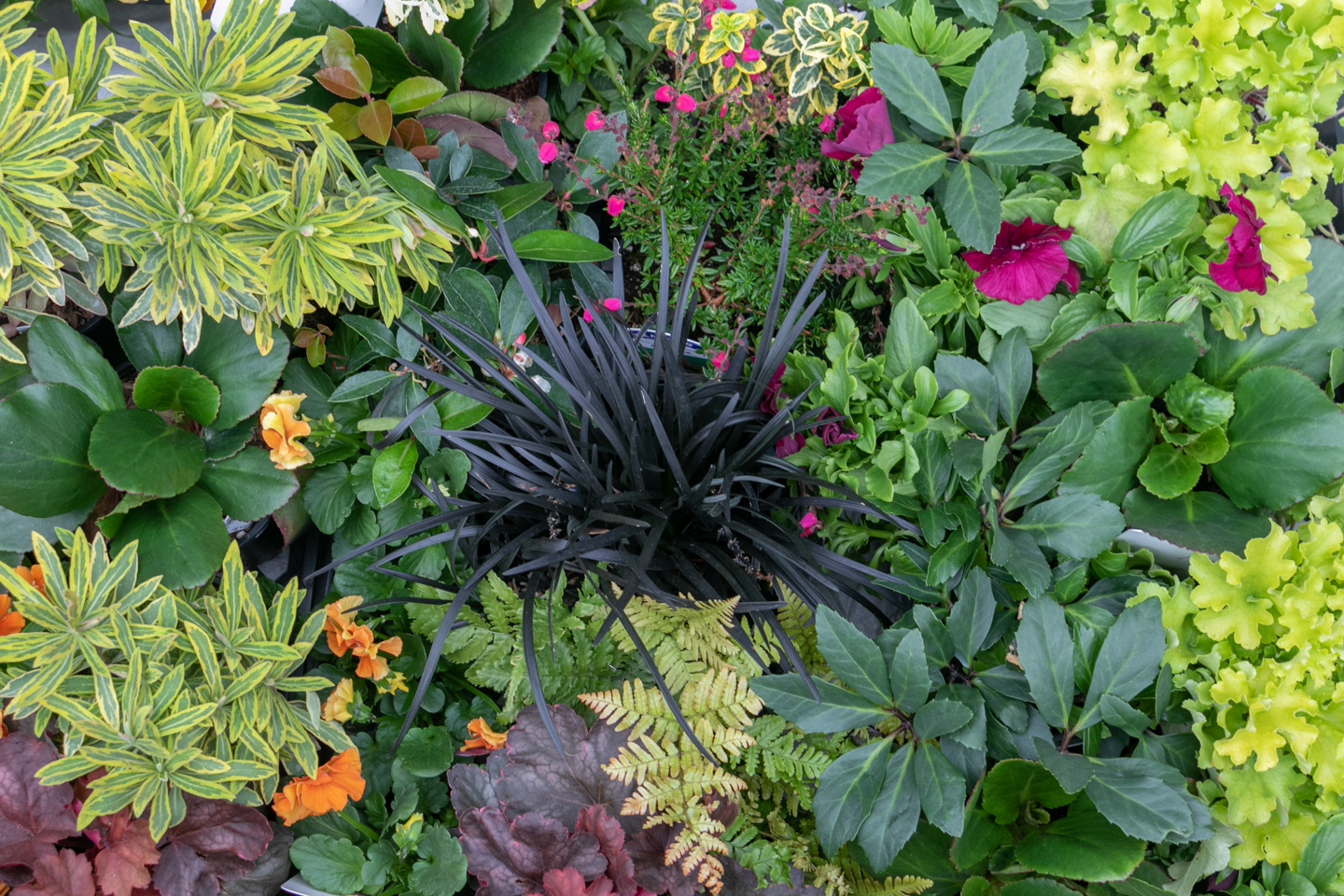

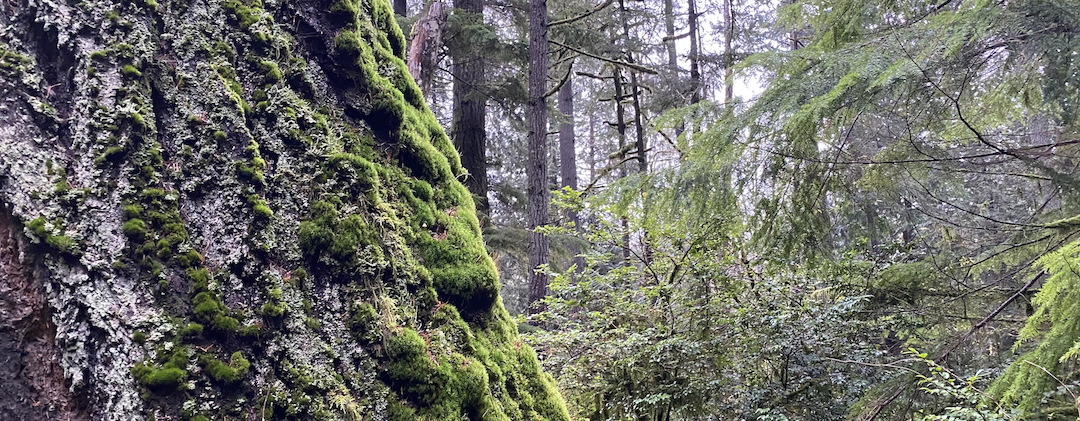





3 Responses
Wonderful post about this magical winter plant. I have never seen it fan trained like that before. Not only is it fragrant and beautiful in winter but many have great Autumn foliage too. I don’t know why everyone doesn’t grow it. Lively photos.
Chloris
Yeah, I almost didn’t know about fan-training them; I thought they were traditionally urn shaped. I happened to stop in at the Center for Urban Horticulture on the way to the arboretum, and there it was. I was lucky to talk briefly with two knowledgeable women from CUH about it. Talk about serendipity.
Really good article here about marcescence, pruning, and the Hamamelis collection at the UW. Thanks Ray Larson!
https://botanicgardens.uw.edu/about/blog/2017/02/02/february-2017-plant-profile-hamamelis-x-intermedia-jelena/